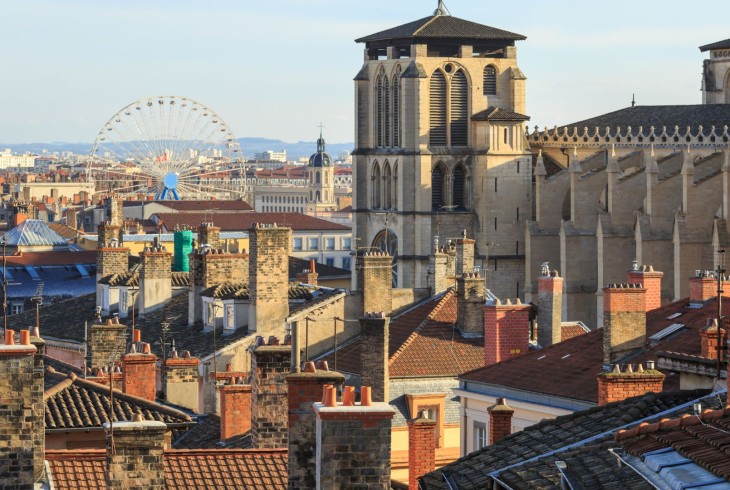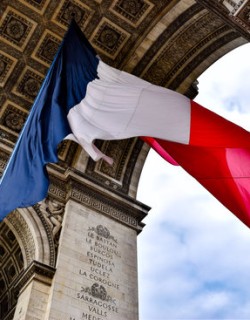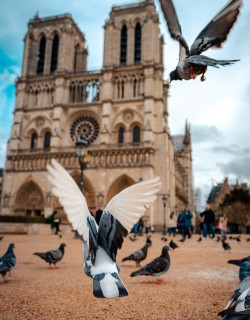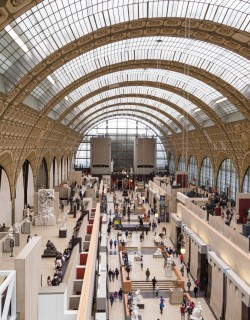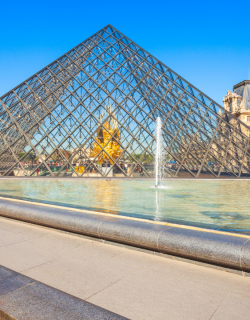Explore easily accessible out-of-town wonders, all while having both morning-time café crème and a late evening glass of Beaujolais wine in Paris.
Lyon
When it comes to things to see and do, Paris really packs a punch. You could come back a dozen times and still leave feeling as though you’d just scratched the surface. Though you might feel like you’re cheating on her by going out of town, Paris won’t mind at all if you venture out beyond the Périphérique – the capital’s multi-lane ring road – to meander further afield for a provincial pause. And the City of Lights will still be there for you to embrace when you return to her that same evening.
Each of the places we’ve selected can certainly be reached by car, if you prefer the freedom of renting a vehicle and getting around on your own. For many of the places on our list, there are shuttle bus options as well. But we’ve made a specific point of identifying spots that are also well connected by France’s excellent and affordable network of trains.
Today’s jaunt takes us to France’s second city. Once the most important city in the ancient Western Empire outside of Rome itself, Lyon remains a thriving metropolis and the undisputed gastronomic capital of the Hexagon. There is so much to talk about in Lyon that we’ll be covering it in three installments. Today we present a bit of the city’s history, then pound the pavement from the slopes of Croix-Rousse – the old silk-workers’ neighborhood – to the heart of the Presqu’île (the peninsula formed by the confluence of the two rivers) and its grand places and elegant boulevards. Our next dispatch from Lyon will bring us from the expansive Place Bellecour – the largest fully pedestrianized square in all Europe – and across the Sâone River to the cobblestone streets and hidden passages of le Vieux Lyon, the Continent's best preserved Renaissance quarter, then finally up to the inspiring basilica of Notre-Dame de Fourvière, perched high on the hill overlooking the whole of the city. The third and final bulletin will be dedicated solely to the culinary delights of available in Lyon, recognized as the gastronomical capital of France.
All aboard!
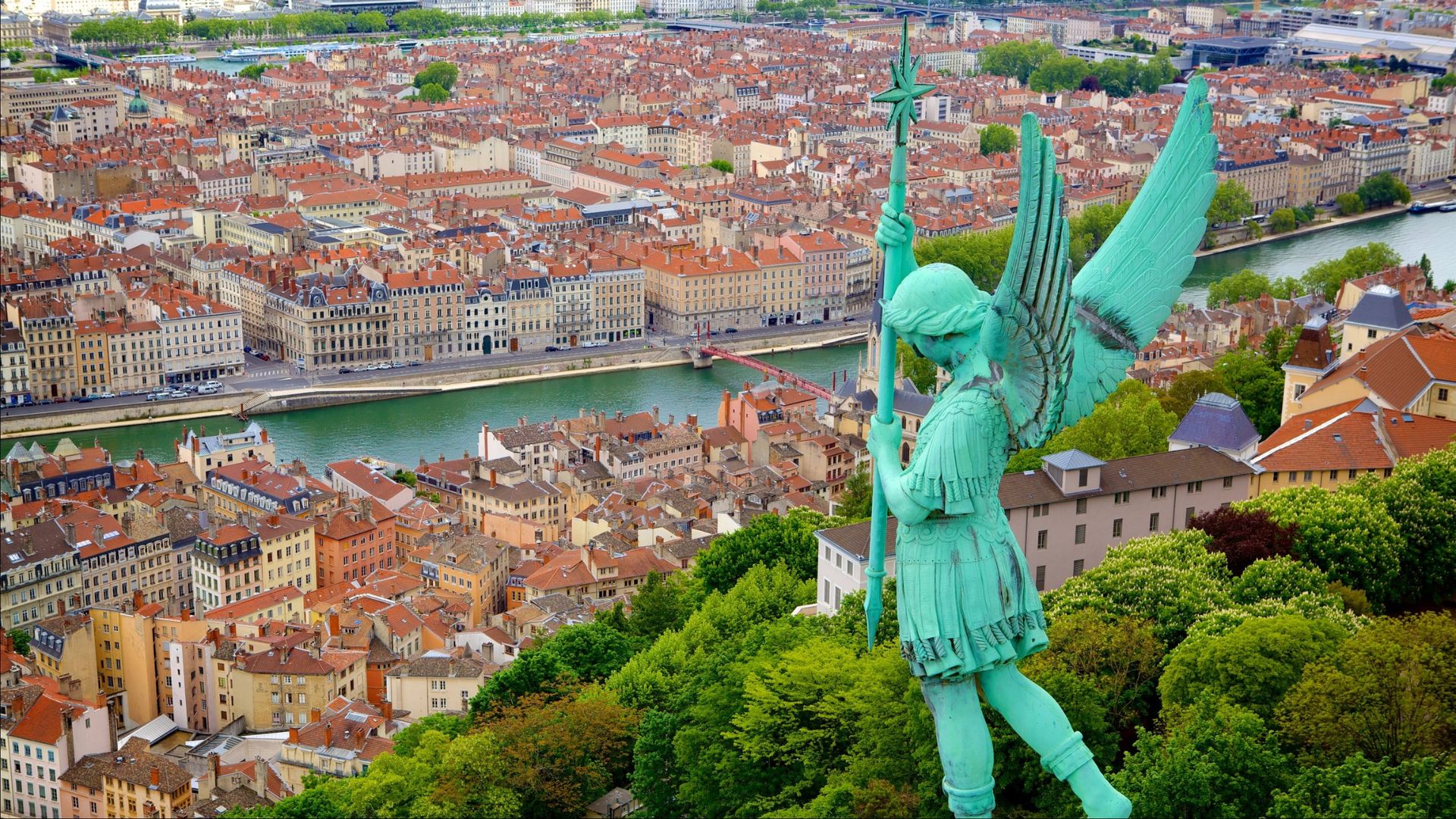
Standing at the confluence of two rivers, the mighty Rhône and the gentle Saône, in Roman times Lyon (Lugdunum) was designated the Capital of the Three Gauls (incorporating most of modern-day France and Belgium) by Caesar Augustus. There are still vestiges of this ancient era of wealth and power high on the hill of Fourvière, where the ancient city was established. At its height in the 2nd century, the city may have been home to as many as 70,000 souls, enormous for the time. With the collapse of the Western Empire, the populace gradually made its way down to the riverside, on the west bank of the Saône. There it would remain for several centuries, with a relatively stable number of inhabitants, until the economic boom that came in the 13th century, promoting expansion onto the Presqu’île, the peninsula formed by the confluence of the two rivers. For merchants, medicants, princes and pilgrims, from the north of France, from Flanders and Burgundy, Lyon was the gateway to the Mediterranean and to Italy.
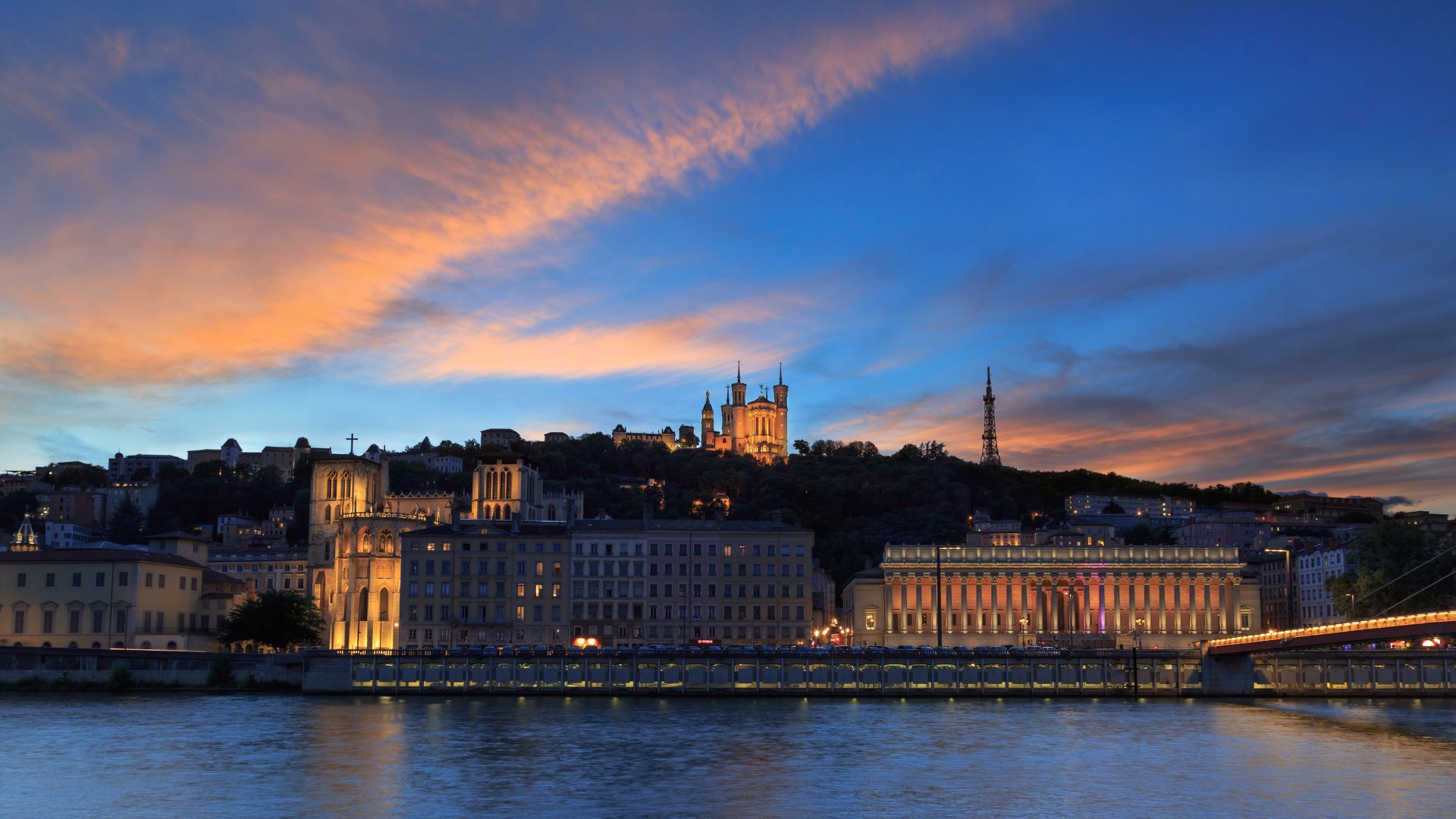
This strategic connection by the Rhône, a temperamental and at times tempestuous but still handily navigable river, spurred the natural development of Lyon as a center of commerce and trade. Most famously, luxury silk products produced here were the envy of the world for many long centuries. Over time, the economy expanded to include banking and financial services, printing (especially of banned books sold on the black market, the cheeky monkeys!) and in more recent times electricity, the automobile industry, and pharmaceutical and biochemical production. Today the city is home to about half a million people, and its metropolitan area – with a population of one and half million – is second only to Paris’. Lyon is an important university hub, with students constituting 10% of the metropolitan population. The Lyonnais are unabashedly proud of their heritage. Their untiring industriousness keeps the city humming with efficient activity, and their reserved affability makes the city an absolute joy to visit.

As always, we recommend getting an early start (plan on being on the train between 7:00 and 8:00 in the morning) in order to make the most of the day. High-speed bullet trains from Paris depart regularly from the Gare de Lyon, whizzing down the rails and pulling into Lyon’s Part-Dieu station in about 2 hours. Located in a modern urban zone to the east of the Presqu’île, it is one of the busiest stations in France outside of Paris itself. One of the several possible exits brings you directly into what is among the largest shopping malls in the country. The station and the mall, together with the commercial and administrative activities in the area, make it a kind of secondary city center. Poking your head outdoors, you’ll see a few skyscrapers lurching overhead, each one with a school supplies-related nickname, reflecting a bit of Lyonnais humor. Two of the most iconic are the Crédit Lyonnais Tower, known as the Crayon, and the Incity Tower, called the Eraser, and in both cases you’ll see precisely why.
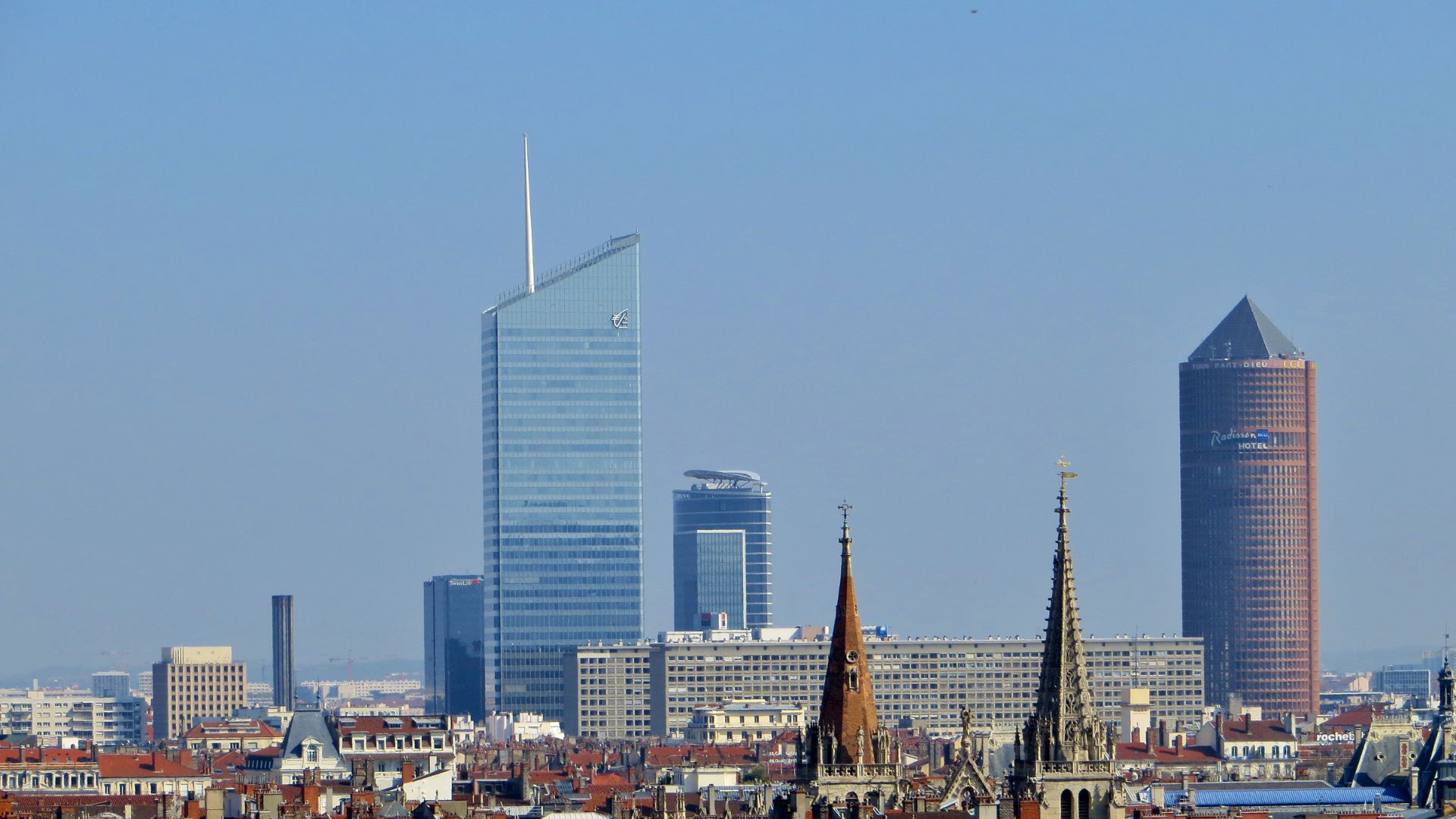
Lyon’s metro (subway) system is clean, sleek, efficient and relatively small – each train is only two cars long. For sheer effect, we recommend taking the metro from the station to the Croix-Rousse stop. You’ll change lines twice, but the whole system is well marked and very user friendly. From the metro stop, you will emerge into a world unto itself. Stretching for more than a kilometer along the Boulevard de la Croix-Rousse is Lyon’s most characteristic open-air market. In high season you will find some of the more intrepid travelers, eyes bulging and wearing irrepressible smiles, but the market is patronized principally by people from this neighborhood, which traditionally was home to Lyon's canuts, or silk workers. Though the quarter's popularity and prices have risen sharply in recent years, there still remains an air of local liveliness and down-home authenticity. Fruit-and-vegetable barkers yell out their prices from stands dedicated to cheese or charcuterie or butcher’s fare… In la Croix-Rousse, one of central Lyon’s two great rises, not much has changed at the market in at least a century.

It’s an easy walk down the slopes, or Pentes de la Croix-Rousse. Stop for coffee and a sampling of viennoiseries (croissants and such) at one of the cafés in the little circular place at the intersection of Rue des Capucins and Rue de l’Abbaye Rozier/Rue Saint-Polycarpe. Here you’ll be chillin’ with the cool kids either inside for a bit of funky urban atmosphere or out at one of the tables in the sun.

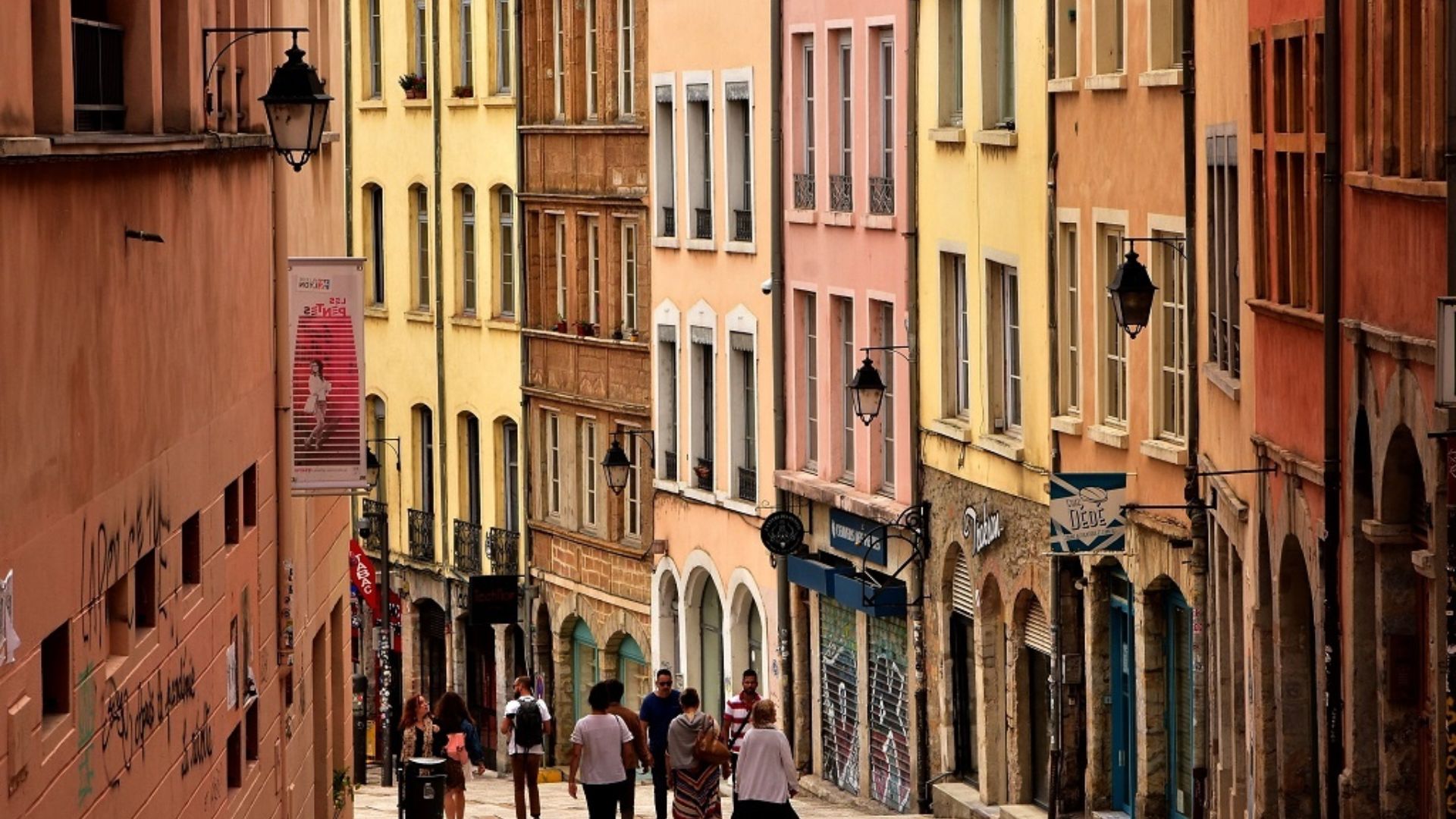
Once you’ve refueled, your descent down toward the flatland of the Presqu’île will direct you to the very heart of baroque Lyon and Place des Terreaux, host to the Hôtel de Ville, or City Hall. If you prefer to sit over coffee surrounded by mid-17th century grandeur, this is your spot. The massive fountain at the north end of the square is by Frédéric Auguste Bartholdi, the very same man who formed the Statue of Liberty, offered as a gift by France to the United States of America. It was originally presented at the Universal Exposition of Paris in 1889, the same year that saw the inauguration of the Eiffel Tower. The mayor of Lyon at the time was so taken with it that he arranged to have it purchased for his city. The curvaceous charioteer is an allegory of France, driving the horses that represent the four great rivers of the Hexagon. You’ll witness a real cross-section of Lyonnais society – from the business-busy to the gleefully unemployed and everything in between – as they crisscross the square or sit beside you at one of the tables, enjoying a beer on tap at one of the several brasseries on the place.
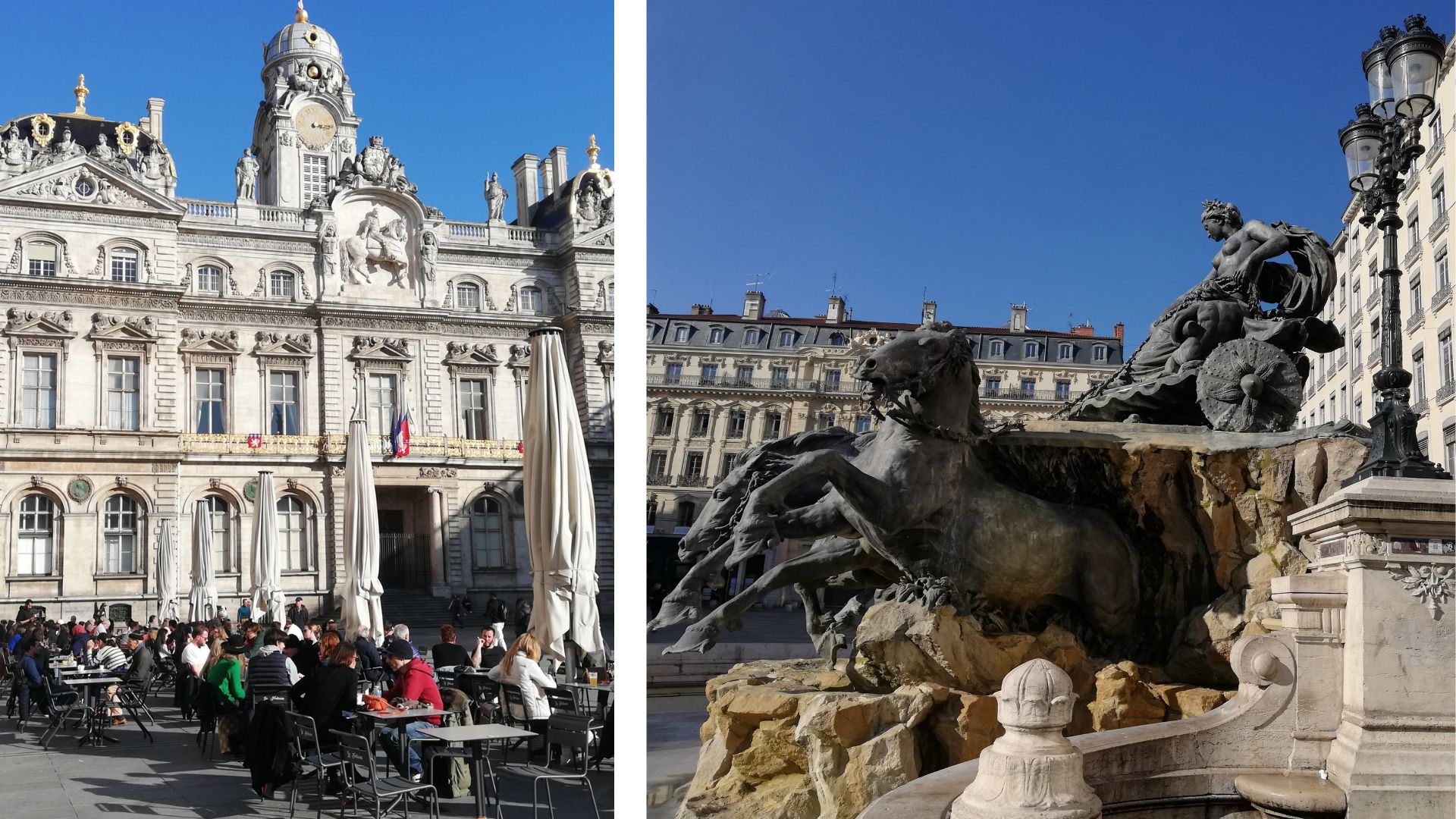
Heading south out of the center of Place des Terreaux, follow Rue du Président Édouard Herriot. This entire area was developed along the course of the 18th century, reflecting Lyon’s growing population and economic importance. This is especially evident nearest the banks of the Saône, with an intermingling of buildings from the later Middle Ages, the Renaissance, the Baroque, and the new classicism of the 1700s. The principal axes that run north-south down the length of the Presqu’île, however, are evidence of the urban interventions of Napoleon III’s Second Empire in the mid-19th century. The influence of Baron de Haussmann’s style is unmistakable, though there is a refined restraint at play here, compared to the more flamboyant spirit on show in Paris. This speaks quite eloquently to the reserved nature of the Lyonnais themselves. Rue du Président Édouard Herriot – like its sisters, Rue de la République and Rue Paul Chenevard, running parallel to the east and west – is lined with stately townhouses, the homes of Lyon’s well-heeled bourgeoisie.

You’ll soon come upon the apse end of the church of Saint-Nizier, its two slender conical spires reaching up over the rooftops. The original church was built here in the 5th century, in honor of the 48 Lyonnais Christian martyrs of the year 177 (a topic to which we shall return in the next installment). Nine hundred years later, a new church was constructed in the Gothic Flamboyant style, and what a wonder it is! Sensuous and soaring on the outside, serious and sober on the inside, the church of Saint-Nizier has been second in importance only to the cathedral itself in Lyon, the Primatial of the Gallican Church, for a millennium and a half.
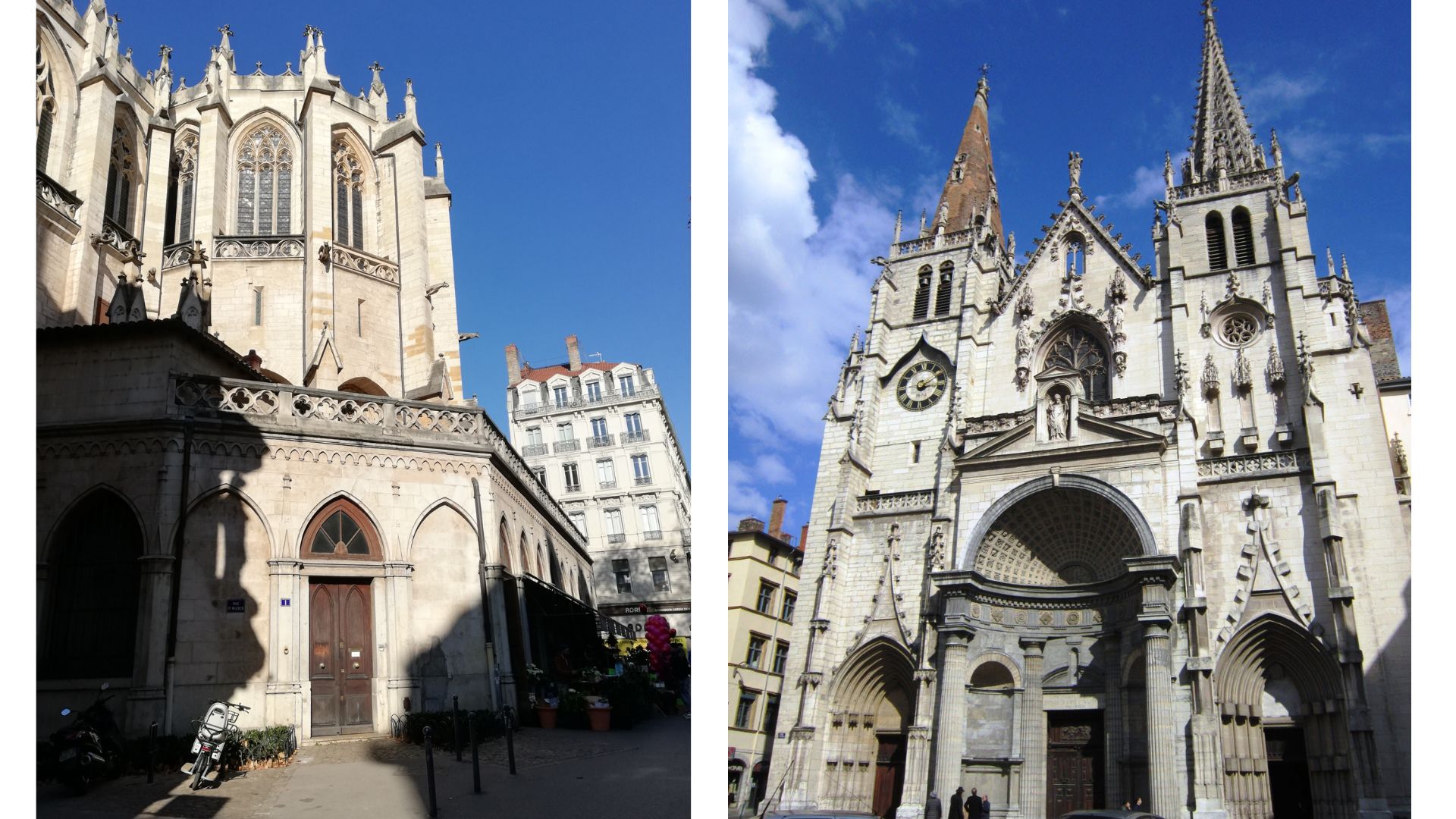
Just a few blocks to the west, we finally arrive at the Grand Café des Négociants. Born in 1864 and perpetually honoring its Second Empire spirit, this café-cum-brasserie was originally popular with silk and diamond merchants and wholesale butchers, who took advantage of the space’s many mirrors to send each other discreet signals and signs. Today it is still frequented by Lyon’s business class, as well as politicians and playwrights, actors and artists. Sip on a before-meal beverage and observe the crowd change as the lunch hour approaches, in the opulent air of 19th-century luxury.
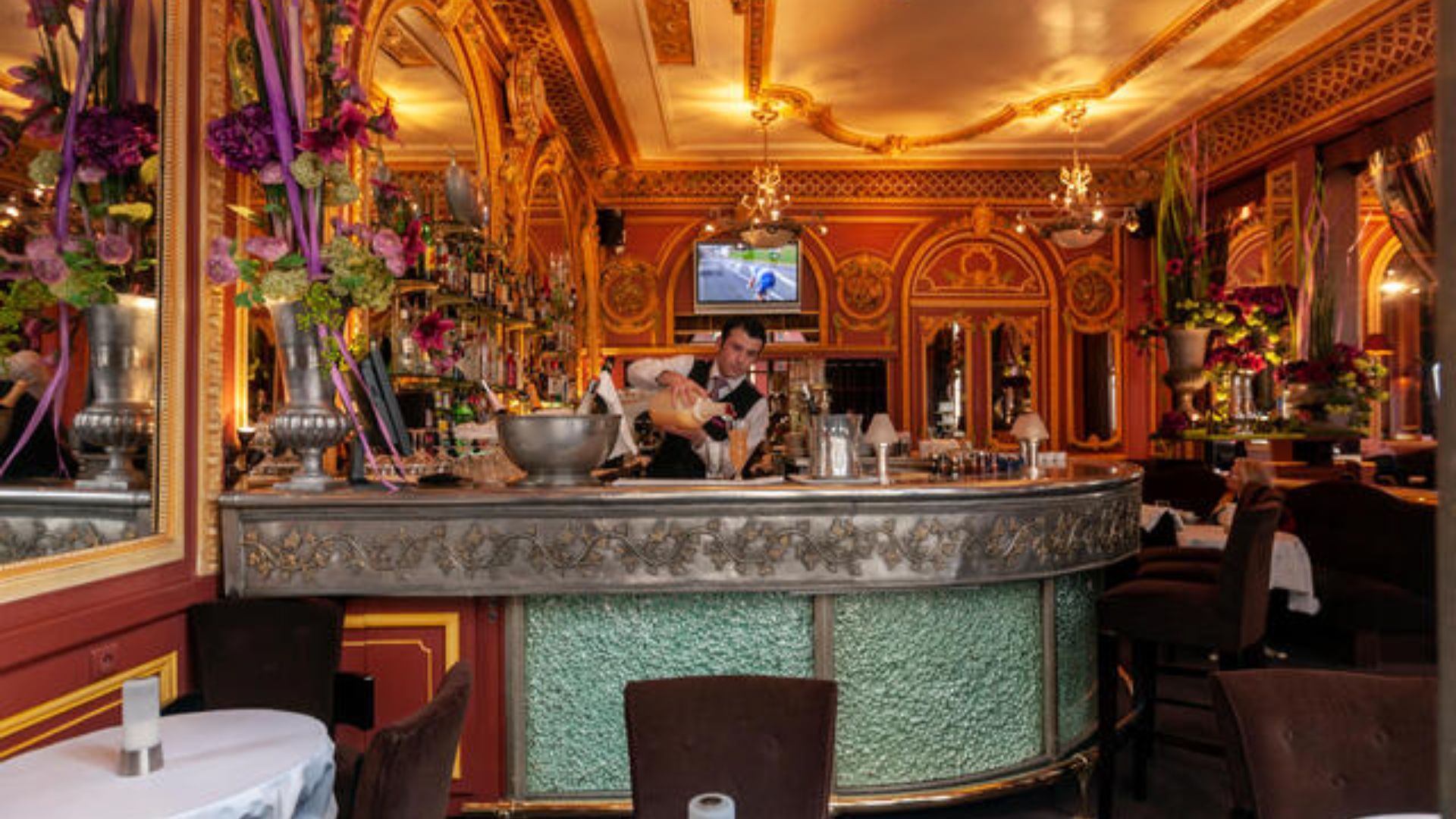
Keep an eye out for our next piece on Lyon, which will take us down into the massive Place Bellecour, over one of the Saône River’s many bridges, and into the charming streets of le Vieux Lyon.
À la prochaine!
Practical Information
* Croix-Rousse Outdoor Market (boulevard de la Croix-Rousse). Every day 6:00 a.m. to 1:30 p.m. (Tuesday and Thursday until 1:00 p.m.) Closed Monday.
* Nuage Café (16, rue des Capucins). Open every day 7:00 a.m. to 9:00 p.m.
* Church of Saint-Nizier (1, rue Saint-Nizier). Tuesday to Friday 8:00 a.m. to 8:00 p.m. Saturday 10:00 a.m. to 6:30 p.m. Sunday 9:00 a.m. to 12:00 noon, 3:30 p.m. to 8:00 p.m. Closed Monday.
* Grand Café des Négociants (1, place Francisque Régaud). Open every day 7:00 a.m. to 3:00 a.m.
